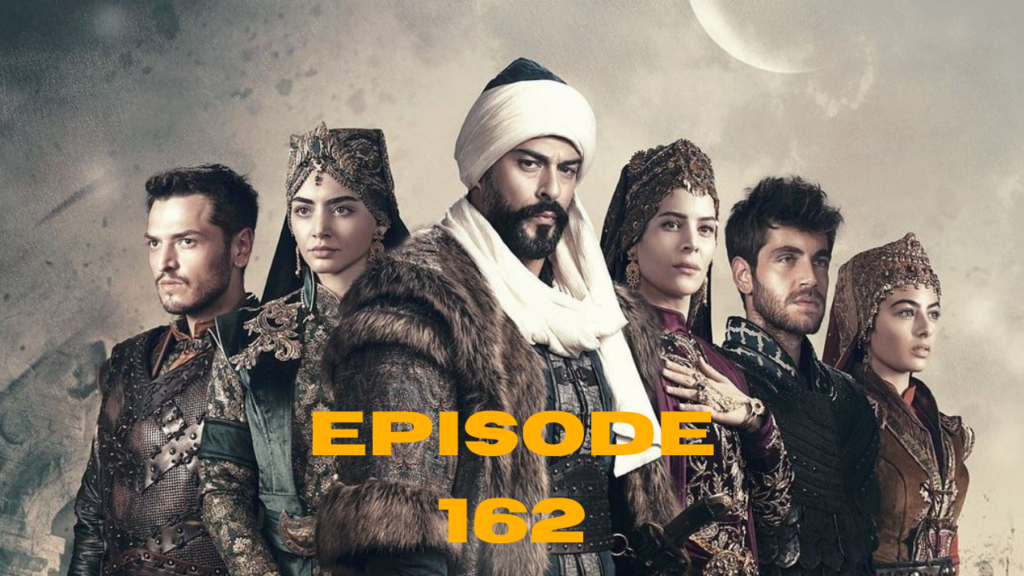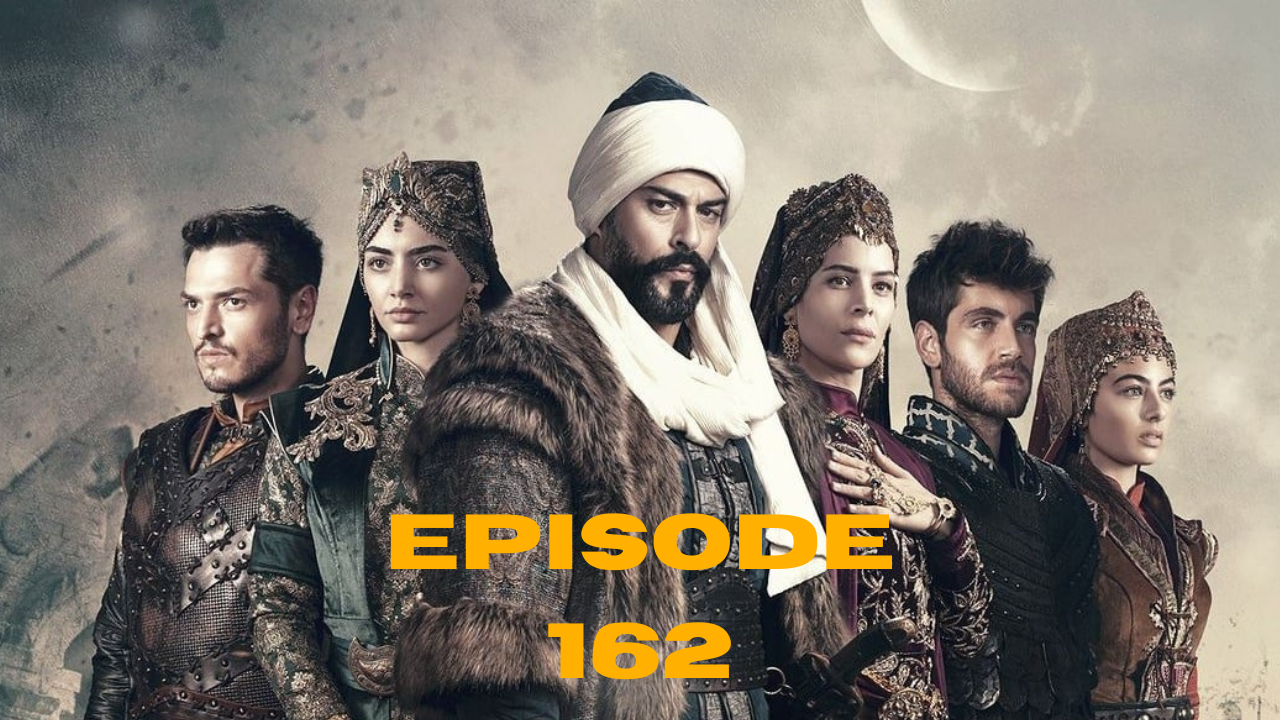
Goncha Hatun and Holofera: Romances with Orhan and Alauddin Bey
This is Kurulus Osman Episode No. 162(32), which is also Episode No. 162 of Season 5 of Kurulus Osman with GiveMe5’s Urdu subtitles. The Ottoman Empire was founded by Osman Bey and would grow to become one of the most potent and long-lasting empires in history. In a chaotic historical setting, Osman Bey’s story and the early years of his new kingdom are a gripping account of ambition, strategic savvy, and the capacity to grasp opportunities.
Early Years and Upbringing
Around 1258, Osman Bey was born in the town of Söğüt, in the Bithynia region of present-day Turkey. He belonged to the Oghuz Turks’ Kayı tribe, a nomadic people with a long history of leadership and fighting skills. As a subordinate to the Seljuk Sultanate of Rum, his father, Ertuğrul, had already founded a tiny principality in the area. Although this alliance offered some stability and legitimacy, Osman would eventually take advantage of the power vacuum left by the fall of the Seljuk kingdom in the late 13th century as a result of internal conflict and Mongol invasions.
Creation of the State
Around 1281, when the Byzantine Empire was waning and several Turkic tribes were fighting for control of Anatolia, Osman took up his father’s leadership role. His military prowess and strategic foresight enabled him to extend his power outside of Söğüt. Osman started to strengthen his position of authority by creating coalitions and taking advantage of the division among his opponents.
Osman’s victory over a Byzantine army at the Battle of Bapheus in 1302 was a turning point in his ascent. In addition to improving his prestige, this battle was the first significant territorial advance against the Byzantine Empire. Osman and his supporters gained new resources and a safer base from which to conduct additional expeditions after conquering Byzantine territory.
Strategy and Governance
A practical approach to both military strategy and governance typified Osman Bey’s leadership. In order to administer a developing state, he recognized the value of both the old tribal customs of Turkey and the necessity of implementing more organized administrative structures. Osman’s rule blended the settled, agricultural customs of the areas he subjugated with the nomadic traditions of the Turkic people.
He put in place a basic administrative structure that his successors would build upon. This included giving power to dependable commanders and local authorities, which guaranteed allegiance and effective administration. Many warriors were drawn to Osman’s cause by his employment of the ghazi ethos, which promoted the idea of a holy war against the Byzantines and other non-Muslims. This cultural and religious drive was essential.
Military Tactics and Expansion
Osman’s military tactics were innovative and adaptable. He employed a combination of conventional warfare, guerrilla tactics, and strategic alliances. His forces were often mobile and capable of striking quickly, which allowed them to exploit the weaknesses of their adversaries effectively. The use of cavalry was particularly significant, as it provided speed and flexibility on the battlefield.
The incorporation of former Byzantine subjects and soldiers into his forces also played a role in Osman’s success. By integrating these individuals, he not only augmented his military capabilities but also gained valuable local knowledge and support. This inclusive approach helped to stabilize newly conquered territories and ensured a smoother transition of power.
Legacy and Impact
Osman Bey’s achievements laid the foundation for the future Ottoman Empire. His ability to carve out a new state from the remnants of the Seljuk Sultanate and the declining Byzantine Empire set the stage for centuries of Ottoman expansion and dominance. His son, Orhan, would continue this legacy, transforming the small beylik into a formidable regional power.
The state established by Osman Bey was characterized by its strategic location, bridging Asia and Europe, which facilitated trade and military campaigns in both directions. This geographical advantage would be fully exploited by his successors, leading to the capture of key cities like Bursa and eventually, Constantinople.
Cultural and Social Aspects
Osman Bey’s reign also marked the beginning of a cultural synthesis that would become a hallmark of the Ottoman Empire. The incorporation of diverse peoples and traditions into his realm fostered a rich cultural environment. This blending of influences is evident in the early Ottoman architecture, art, and administrative practices, which combined elements of Turkish, Persian, and Byzantine cultures.
Socially, Osman Bey’s state was relatively inclusive for its time. The early Ottomans were known for their tolerance of different religions and ethnicities, which helped to maintain stability in newly conquered territories. This policy of tolerance would continue under subsequent Ottoman rulers, contributing to the empire’s longevity and prosperity.
Conclusion
Osman Bey’s establishment of a new state in the late 13th and early 14th centuries was a significant turning point in the history of the region. His leadership, characterized by strategic acumen, military innovation, and pragmatic governance, enabled him to transform a small principality into the foundation of what would become one of the world’s greatest empires. The legacy of Osman Bey is evident in the lasting impact of the Ottoman Empire on the political, cultural, and social landscape of Europe, Asia, and beyond.
The early success of Osman Bey’s state can be attributed to his ability to adapt to changing circumstances, his strategic use of alliances, and his inclusive approach to governance. These qualities not only ensured the survival of his nascent state but also set the stage for the remarkable expansion and influence of the Ottoman Empire in the centuries to come.
